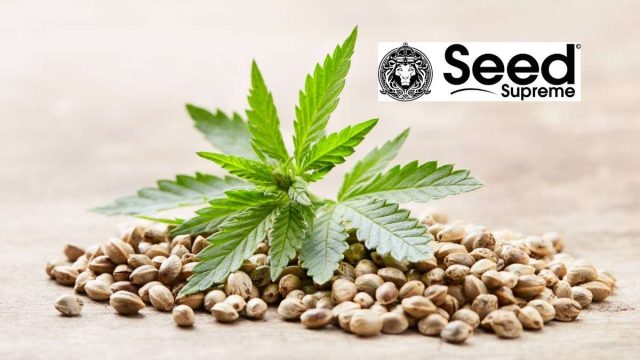Many cannabis farmers wish to boost their plants’ productivity and efficiency. Mainlining increases cannabis yield. This article will explain this technique in detail, providing a step-by-step process and answers to frequently asked questions.
Manifold creates a uniform plant that distributes energy and nutrients equally. Cannabis farmers can utilize this strategy to boost their yields at a low cost. It can prevent a single bud cluster surrounded by lesser blooms by bending and lengthening the stems. This encourages the formation of many equal pieces of bud clusters. For the finest harvests, you’ll need the best seeds, too. Buy marijuana seeds from a trusted seed bank.
Benefits of Mainlining Cannabis
Contents [show]
The great feature of mainlining is higher yields. This method also improves light efficiency, lowers bud rot, and reduces “popcorn” or larf buds. These buds consume plant energy and nutrients but do not produce cannabis. If they do give, it is usually very little.
Using this method promotes uniform cola height. Colas are thick bud clusters. An even canopy saves energy and reduces maintenance. After the initial training, the plant requires little effort to maintain its growth pattern.
Important Terms
On the topic of manifolding vs. mainlining, growers are divided. Some call them synonyms. Others say manifolds get topped twice, and mainlines get completed once. Others say mainlining refers to the process, whereas the manifold relates to the final construction.
Many people confuse the terms manifolding and fluxing. A minor but significant clear distinction between these two strategies. It is utilized to ‘fill in’ narrow or irregular gaps, whereas manifolding generates symmetry that supports even growth, energy, and nutrients. All colas should be the same size when manifolding. Fluxing cannabis does not achieve this.
Steps to Mainline
You will need a plant, sterilized scissors or plant shears, and soft plant ties to mainline marijuana plants. This method works best with seedlings, not clones, so start with seeds from Seed Supreme.
Grow the Seedling
Mainlining can begin when the seedling has 5-6 nodes. Nodes grow next to one other. It’s where the leaf or branch splits from the stem. Waiting until 5-6 nodes form sure the plant is strong enough to start topping and provides sufficient air circulation. You can start later, but you will waste time and energy. Never mainline a cannabis plant that has already bloomed.
Plant a Bud
After growing the foundation plant, it’s time to top it. Clip the main stem above the 3rd node with a clean, straight cut using sterilized scissors or gardening cutters. Leave at least 5 cm between your stake and the lateral branches. This will prevent later splits. Stalk splitting causes plant damage and disease. Top growth for cloning or disposal. Now you have one main stem and two branches parallel to each other.
Trim Below 3rd Node
Now we must limit the plant’s energy production to the two branches of the third node, which will be the main structure of the complex. Clear the area below the third node. This leaves the plant with only the main stem and two branches of the third node for energy intake. All energy and nutrients can now be directed to the buds.
Tie the Shoots
Tie the growing branches at a 90-degree angle once they’re strong enough. This forces the plant shoots to grow horizontally. Allow the plant a few days to recover or grow before tying the shoots down. Use a tie or wire that won’t break or cut your plant without plant-specific tie material. Avoid using flimsy wire or string.
Wait for Growth
Allow your plant to develop for weeks. During this time, each stalk will grow new nodes. Some growers wait until each main has 3-4 new nodes, while others stop as soon as new growth tips appear.
Top Again
Select a fresh set of nodes for each main. The nodes must be symmetrical and in the same place on both sides of the two mains (directly across from each other). This promotes nutrient efficiency and equitable distribution throughout the plant. Select nodes with similar growth on both sides. Remove any growing tips below each side of the plant. Some growers remove all fan leaves, while others leave them to help with energy. It would help if you had four mains or colas.
Tie Again
Tie the new mains down as you did before. Each time you top the plant, it doubles its colas or mains. Ordinarily, indoor growers end at 8. Outdoor growers can produce up to 32 colas of high-quality cannabis. More colas mean more energy spread across the buds, resulting in lower grade cannabis. That’s why outdoor growing yields the most colas. Removing ties once the plant shape is complete.
Now that the manifold has been built, you can grow your plant regularly. If you observe one cola growing taller than the rest, gently bend it away from the plant’s core, using a gentle knot as needed. This ensures the plant’s canopy is even.
Other Ways to Increase Yields
Many farmers employ super-cropping to improve crop yield. This is a popular growing technique that differs from manifolding. Aside from practice, farmers can increase light intensity, balanced plant nutrients, control temperature and humidity, and harvest within the optimum window.
FAQ
What are the best mainlining strains?
Mainlining strains with medium to tall colas are desirable. Gorilla Glue and Jack Herer are fantastic marijuana strains for mainlining.
How long does it take to mainline marijuana?
The usual growth time for mainlining is 60 to 70 days. However, this depends on the number of toppings and the time between them.
Are you able to mainline auto flowers?
Autoflowering cannabis strains should not be consumed in large quantities. These strains grow more quickly than others and will be stressed by repeated topping, reducing eventual yields.
Should novice farmers strive to make a living off of cannabis?
Yes! Mainlining is an excellent approach for new or inexperienced gardeners. It requires no special abilities and produces dense, plentiful buds on most healthy plants.


